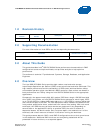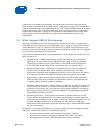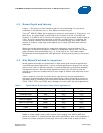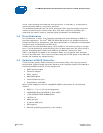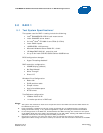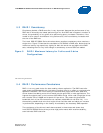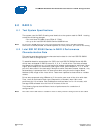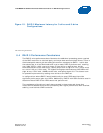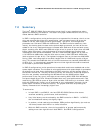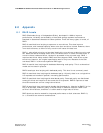
Intel
SSD DC S3500 Workload Characterization in RAID Configurations
White Paper December 2013
18 329903-001US
7.0 Summary
The Intel
®
SSD DC S3500 Series drive has proven itself in many applications where
speed and reliability are essential. The data in this paper shows that this drive is very
robust behind a RAID controller.
In RAID 1 configurations, write performance is as expected for this setup; that is, a two
drive set matches the single drive specification, and increases linearly as drives are
added to the set. With eight drives at queue depth 1 per drive, this configuration
processes over 50K write IOPS with 4KB blocks. The RAID controller adds very little
latency, but latency does increase as the queue depth grows and, as more drives are
added to the array. Read performance increases with additional drives and with queue
depth, reaching over 200K read IOPS with eight drives, a queue of 8 per drive and 4KB
blocks. More importantly, the performance on mixed workloads was excellent and
increased as more drives were added. The 70% read workload topped out at close to
110K IOPS with 4KB blocks, and the 90% went to nearly 150K IOPS with 4KB blocks
(both at queue of 8 per drive). The highest throughput seen in this test was 2300 MB/s
during 100% read using eight drives with transfer size of 128KB and a queue of 8 per
drive. This means the bandwidth limit of the PCIe lanes was not reached (4000 MB/s for
x8 PCIe 2.0). It is theoretically possible that more than eight drives could be used and
an increase in performance obtained.
In RAID 5 configurations, write operations increase both as drives are added and as the
queue depth increases. The increase in write performance with queue depth is somewhat
surprising and is most likely attributed to the RAID controller and the scaling effect of
the cache in each drive. This may be due to the way the controller writes the stripes to
the drive set, possibly consolidating the 4KB blocks into the 256KB stripes. Read
performance is also very good, with eight drives reaching 300K IOPS with 4KB blocks
and queue depth 8 per drive. Mixed workloads show very good performance with 70%
read hitting 75K IOPS at queue of 8 per drive and 90% read coming in at almost 140K,
both with 4KB blocks. Latency on all workloads is very manageable, although, as the
queue depth increases, so does the latency. The graphs show that as queues grow,
latency increases at an increasingly higher rate.
To summarize:
• In both RAID 1 and RAID 5, the Intel SSD DC S3500 Series drive shows
excellent scalability, performance, and consistency.
• Very little latency was introduced by the RAID controller in RAID 1. In RAID 5,
the overhead and latency are slightly higher.
• In random, mixed read/write workloads, SSDs perform significantly (as much as
100 times) better than HDDs in a similar situation.
• With this RAID controller, there is the possibility of greater performance by
adding more than eight drives in both RAID 1 and RAID 5 configurations.




